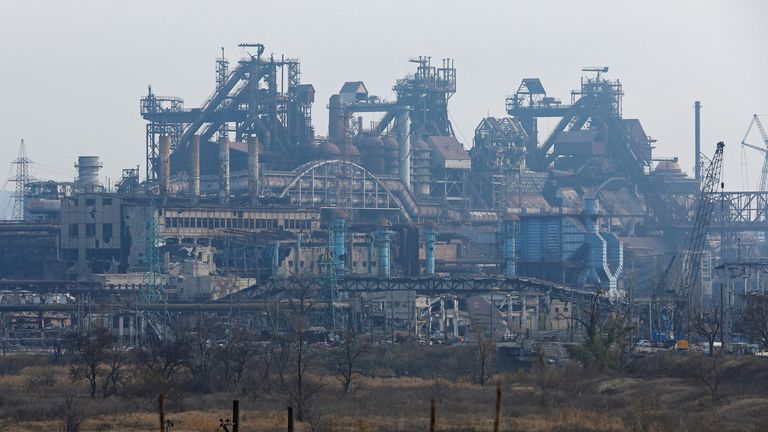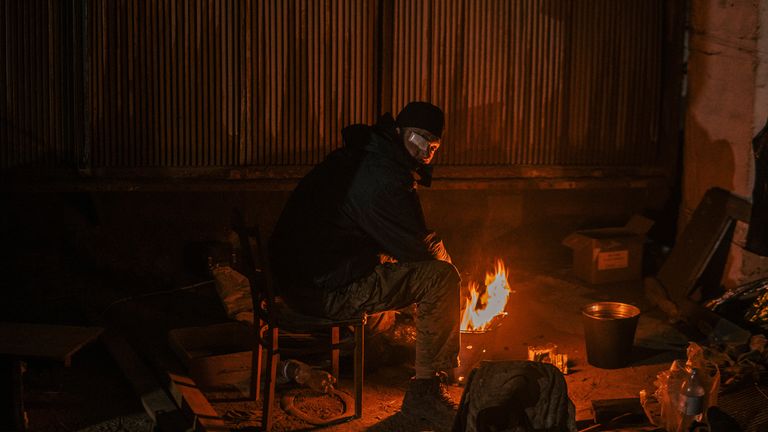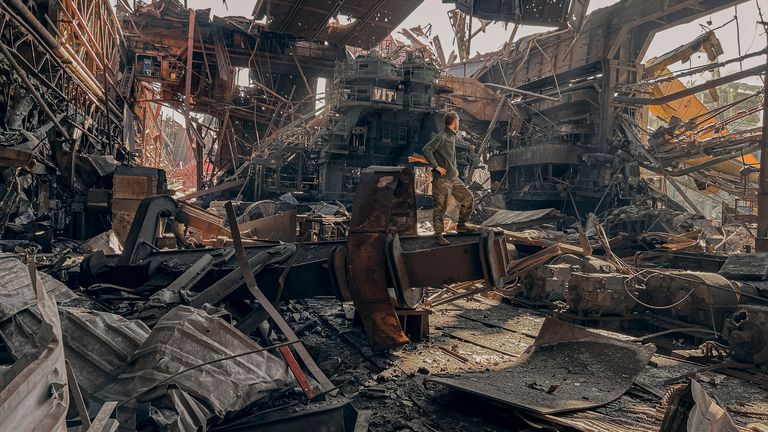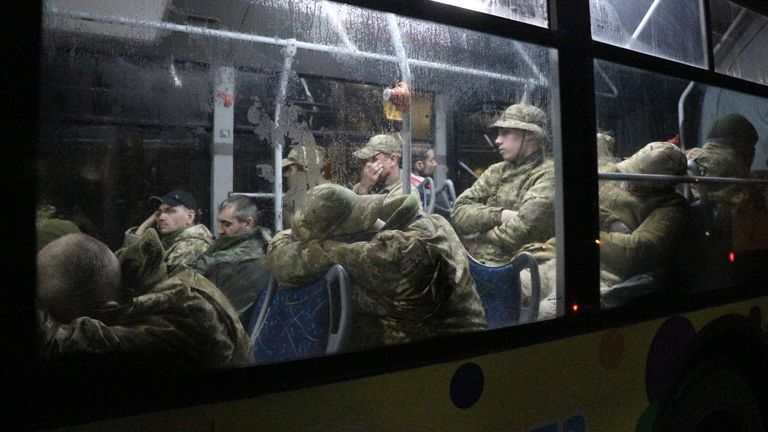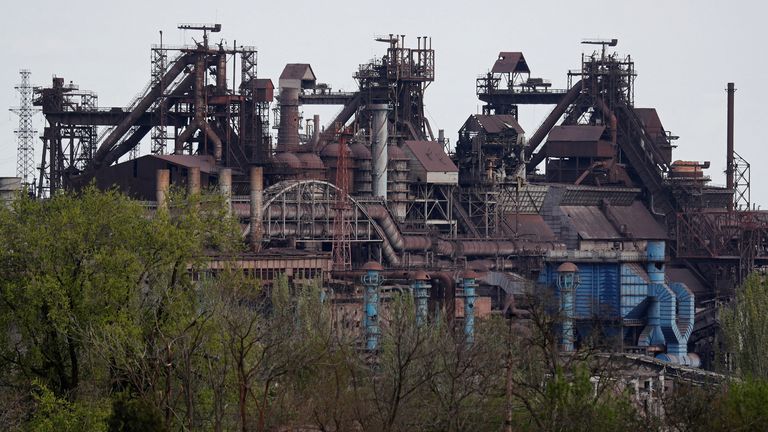“It really hurts to think about Azovstal,” Yevgen says, remembering how bombs rained down as defenders made their last stand inside the steelworks. “Not all of us came back.”
It was a desperate situation. Medical staff worked around the clock treating the wounded in a bunker, as fighters outside mounted fierce resistance against appalling odds.
Yevgen Gerasimenko, a retired military surgeon, was working in a hospital in Dnipro, southeastern Ukraine, when Russia launched its full-scale invasion in February last year. Like so many others, he put his hand up to defend his homeland.
What followed was a daring flight into besieged Mariupol on a helicopter loaded with ammunition. The plan was to smuggle him into Azovstal to save lives.
After the steelworks and city fell to Kremlin forces on 20 May, he spent four months as a prisoner of war.
“I can’t think about Azovstal without tears in my eyes”, Yevgen, 62, tells Sky News in an exclusive interview for the anniversary of the surrender of the steelworks.
Flying low into Mariupol under cover of darkness
“Helicopters were there waiting for us,” he said.
It was 2am on 31 March 2022 and Yevgen was at an airport with a group of fellow medics including another surgeon, two anaesthesiologists and a head nurse.
There wasn’t even enough room to sit down in the aircraft because of all the supplies packed tightly onboard.
“We flew really low, about eight or 10 metres above the land. Sometimes I even felt we touched the tops of trees.”
They landed successfully and transferred to motorboats which were loaded with ammunition and weapons.
“We couldn’t have any lights, it was dangerous. We didn’t want anyone to spot us so we had to use GPS to get to Azovstal.”
It took about an hour to reach the docks near the factory. But their adventure was far from over – airstrikes started as the group approached the plant and lasted for about three hours.
They watched as planes approached the metalworks and dropped bombs just 700 metres or so from where they were hidden. Eventually, they made it inside.
Inside the factory fortress
“We were exposed to constant bombardment from the enemy,” Yevgen said. “They tried to hit us from air, land and sea.”
There was a constant flow of wounded coming into the bunker where Yevgen and his colleagues worked, treating about 350 patients at a time.
“Our medical staff were physically exhausted and psychologically depressed. They had to work 24/7 with injured people.
“There wasn’t enough air in there. There wasn’t enough drinking water, food or sunshine.”
Azovstal fighters lay down their arms
The defence of Mariupol has already gone down in history, with the last Ukrainian soldiers holding out for weeks in the ruins of their city.
Finally President Volodymyr Zelenskyy gave the order for all those who remained in the steelworks to surrender.
In Yevgen’s view, “that order saved the lives of over 2,500 people”.
On 20 May, after more than 80 days of resistance, the last Ukrainian fighters laid down their arms. Those who had defended the steelworks were hailed as heroes by their government.
They were credited with tying up Russian troops for weeks, buying time for Ukrainian forces elsewhere to regroup and rearm.
Read more:
The pounding of Azovstal – pictures that tell a thousand words
Released Ukrainian prisoner of war reveals torment at the hands of Russians
Four months as a prisoner of war
After their surrender, any hopes that he and his colleagues would be immediately returned to Ukraine, or granted rights consistent with their status as medical professionals under the rules of war were dashed.
“Russia did not follow the Geneva Convention. It violated all the rules,” he said.
“All our medical staff, including nurses and military doctors, were taken hostage.”
Yevgen says he was held captive for a total of four months. He was taken prisoner on 20 May – he remembers the date because it’s his wife’s birthday – until 20 September when he was released back into Ukrainian-held territory.
“It’s difficult to describe the feelings I experienced during that time”, he said.
“I feel bitterness, and I feel sorry for the nurses and medical staff who are still in Russian-held territory, illegally kept as prisoners of war.”
Heart of Azovstal project
Yevgen was able to return home. He is now back working at a hospital treating wounded soldiers.
He is also promoting the Heart of Azovstal project, an initiative launched by Ukrainian billionaire Rinat Akhmetov to support people who helped defend Mariupol, and the families of those still in captivity.
The project includes treatment and rehabilitation programmes designed to meet the diverse needs of the soldiers and their families, and help them return to a civilian lifestyle.
Looking back at the events of 12 months ago, Yevgen says it is tough to think about what happened. But, he adds, if he could go back to March 2022 he would do it all over again.
“Mariupol, Donetsk and Luhansk regions and Crimea – this is our homeland and we must defend it.”
This story originally appeared on Skynews



